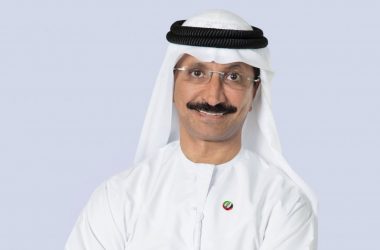With the organisation’s data centre archaic and inefficient, Saeed Al Ghailani, Head of Infrastructure and Telecoms, Department of Transport Abu Dhabi, knew change was a must. When the arm moved to a new office in Bain Al Jessrain, he took the opportunity to modernise and streamline IT operations.

“Our old data centre utilities were housed on a balcony in Al Bateen,” Al Ghailani says. “The data centre itself was severely limited, power-hungry, and kept in a residential building, with poor airflow.” He recalls the extent to which his team was stretched to ensure its smooth operation. “Every weekend during the summer we had to do extra work to maintain it. A whole host of initiatives had to be put on hold as a result.” Downtime was a frequent occurrence, and heavily disruptive to DoT’s operations.
Consider DoT’s beginnings and it becomes easy to understand why the quality of their IT infrastructure was lagging. Established in 2006, the government arm has experienced rapid business growth in the last few years, which has necessitated more complex IT solutions to cope with demand. As operations expanded, the business swiftly outgrew its initially basic requirements.
DoT looked to shift from its original site to a new facility in Bain Al Jessrain, and the IT department would not only be forced to move, but would be an essential catalyst for the whole installation process. With DoT turning over a new leaf in terms of their data centre, the company’s operations could not be disrupted as they had been before, and for this to take place, a smooth integration was needed.
Al Ghailani was always clear on what he needed from the new facility, “We wanted to implement a highly available and scalable data centre,” he says. “It would have to be cost-effective and efficient in terms of power, cabling and OPEX. We were keen to shift away from a reactive stance on managing our infrastructure to a proactive one, where our capacity planning could be done in advance, with a holistic view of our IT. The design would have to be modular and efficient.”
He was given from the end of July 2013 until the start of December to complete the transition to the new facility. “If the IT infrastructure was not ready, we would not be able to shift the data centre,” Al Ghailani says. “As soon as operations started in the new building, everything would have to be up and running without any downtime.”
DoT’s IT team opted for a 48-hour stint of “managed downtime” when there would be no active users – the weekend before the UAE’s 42nd National Day on 2nd December. The move required Al Ghailani and his team to be diligent in their preparation, Easing the transition, all the equipment housed in Al Bateen was shifted by contractor Schneider Electric to the new site.
Following a diligent and concerted effort from his team which led to a successful installation, Al Ghailani has been in no doubt as to the project’s marked impact on DoT’s IT. The transition has served as a major leap forward in terms of IT infrastructure progression, and has provided a tangible return on investment. “We’ve raised the percentage of virtualised servers from 13 to 92,” he says. “This has saved us 4.4 million AED on the cost of physical servers.” His new data centre is now larger, experiences less downtime, and has a lower carbon footprint.
The Department’s IT offerings are now much more in-sync with the company’s overall objectives. Having been hamstrung by physical space and power constraints, Al Ghailani now has a platform to introduce a range of modern software and applications. “Beforehand, if we’d needed CRM, archiving or ERP, it would’ve been a case of us not having the server space to install them,” he says. “Now that is not an issue for us; these kinds of initiatives are no longer on hold.”
Al Ghailani credits Schneider Electric’s Data Centre Infrastructure Management solution for playing a key role in DoT’s IT advancements. The ability to monitor DoT’s infrastructure via mobile devices has not only enhanced their capacity for threat prevention, but has also given Al Ghailani valuable peace of mind. “Now we don’t need nearly as many technicians; our staff can detect a problem in the data centre even if they are away from the office,” he says. In line with this, the DCIM solution has been integrated with Schneider’s network operations centre and help desk. “In this vein, we’re better able to diagnose, pre-empt, and then avoid issues,” he says. “If I go to sleep at night and a fault occurs, I’ll wake up and find Schneider at my door waiting to fix the problem.”
With the sharp increase in the number of virtualised servers, capacity planning has now become a breeze for Al Ghailani. “It used to take us days or even weeks to allocate data and applications to each rack,” he says. “DCIM gives us this choice and makes life much easier, meaning it takes little effort to move components across racks.” Meanwhile, greater redundancy has also reduced amount of downtime his team experiences.
Looking forward, Al Ghailani is confident that the enhancements have laid the foundations for future technological demands. “Hopefully we’ll be able to orchestrate and automate our IT infrastructure services,” he says. “We’ll look to move to software-defined networking and a software-defined data centre, and will also look at more smart services.” He believes this smart element is a game-changer. “Everything is going smart,” he says. “Kids nowadays want more than we did. Apps, data and social are all multiplying, and as a government entity we have a duty to provide smart services.”





